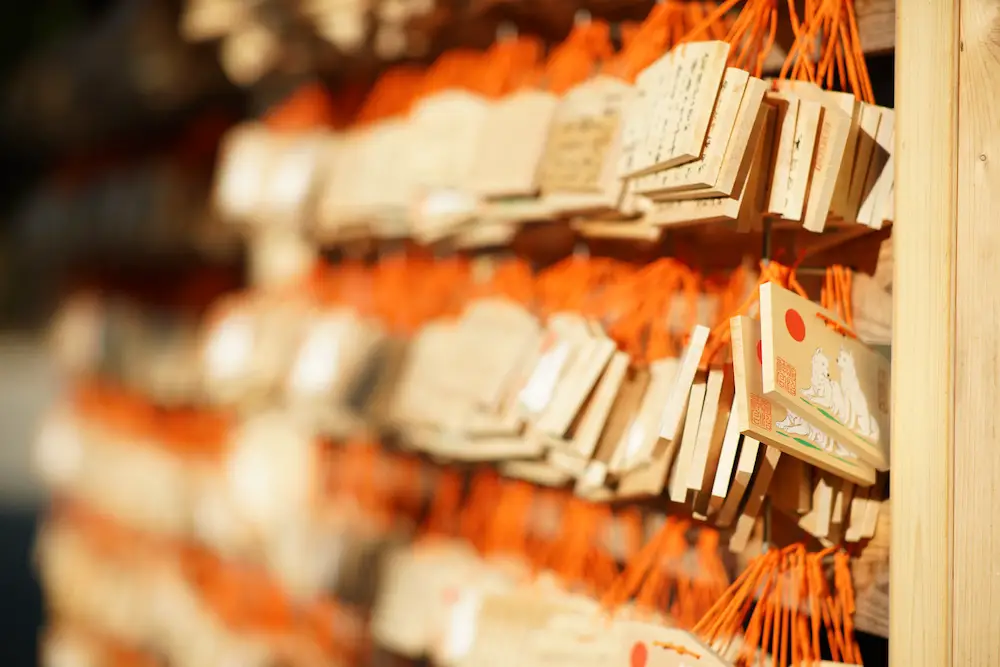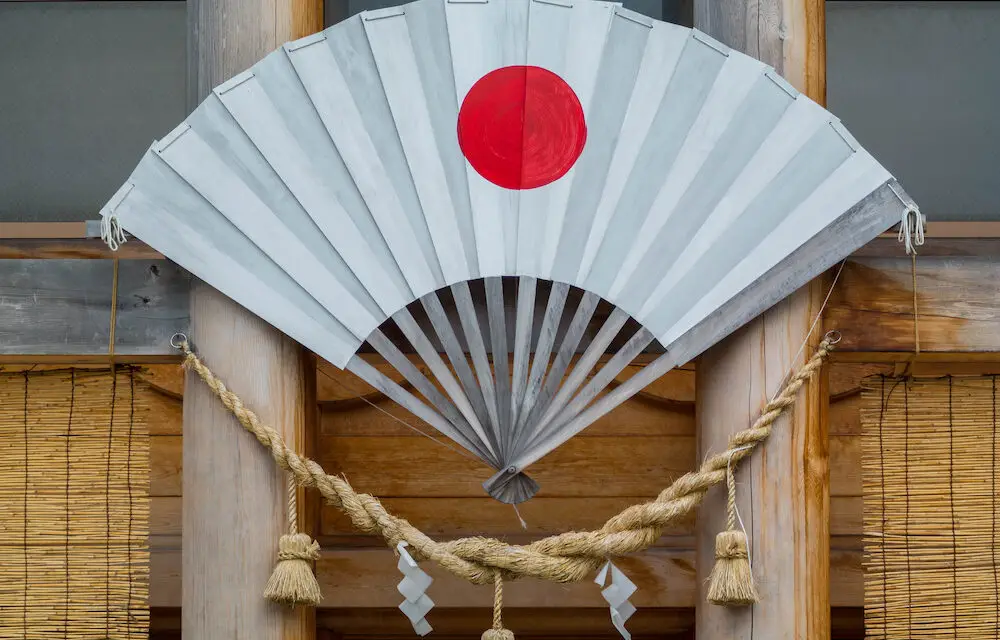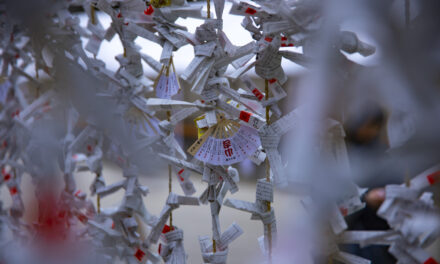Believed to be as old as Japan itself, Shinto is the traditional religion of the Japanese people.
Along with Buddhism, it is the most followed religion in the country.
In fact, around 80% of the Japanese population participates in Shinto ceremonies and festivals at shrines.
Unlike the majority of the religions of the world, though, it does not have a founder.
By and large, Shintoism focuses on rituals more than on beliefs.
Shintoism holy books are not actually sacred scriptures; instead, they are a collection of ancient myths and traditional teachings.
Contents
The Origin of Shintoism
Having almost 80 million gods (also known as kami), Shinto is also referred to as “the religion of a million gods.”
It literally translates to “the way of gods.”
First introduced in the sixth century AD as the native religion, it had more than a few conflicts with Buddhism.
In the beginning, Buddhism was triumphant in overshadowing Shinto. Soon, both faiths made peace and even complemented each other’s existence.
By the 18th century, during the Meiji period, Shinto became the national religion of Japan.
Decades later, Shinto priests assumed important state offices and worked to get Buddhism out of the way.
In line with this, religious doctrines made Japanese people believe that they are superior to the rest of the world.
Shinto books also entailed that the Japanese emperor is fated to be at the helm of the world’s rule.
Alas, the religion and the state were parted after Japan’s defeat in WWII.
What Is Modern Day Shinto Like?
Today, Shinto includes 13 principal as well as various minor sects.
The major sects have the following divisions:
- Those with minor modifications of ancient Shinto
- Those with emphasis on sticking to Confucian ethics
- Those with a transcendent commitment to faith healing
- Those with the practice of worshipping mountains
- Those with a devotion to purification rituals
People pray at a home altar or shrines, seeking help.
Even weddings are carried out in Shinto traditions. However, funerals are held in the Buddhist way.
Around 100,000 priests and 81,000 shrines are part of Shinto sects in the present day.
Shinto Beliefs
Shinto is not a religion in the conventional sense; it is a way of living.
Unlike other religions, a person does not have to publicly announce to enter this community.
After the birth of a child, the local shrine voluntarily makes the name of the child a part of the membership list.
Moreover, after death, Shinto followers believe that the spirits live in another sacred world known as “the other world of heaven.”
This other world is different from the ordinary world.
The Concept of Kami
The essence of the Shinto religion is that everything, dead or living, possesses spiritual energy known as kami.
Shinto followers believe that some things have more kami than others.
For instance, natural places such as mountains, rivers, lakes, and shrines are where kami resides.
There are numerous kami, but the most important is Amaterasu, the sun goddess.
She is thought to be the parent to the emperors of Japan. Ise, the most significant shrine in Japan, is where she dwells.
Shinto Sects
Shinto has the following significant sects.
Shrine Shinto
Shrine Shinto has survived from the start of Japanese history to this day.
State Shinto (having a basis in the name of state and religion), which has gone archaic, is now a part of Shrine Shinto.
Shrine Shinto has close connections with the royal family of Japan.
Sect Shinto
It is a comparatively new movement that has major as well as minor sects.
13 major sects of Sect Shinto came up around the 19th Century in Japan.
In contrast, multiple other denominations took birth post-WWII.
Each one of these sects had a founder who would regulate them into a religious body.
Folk Shinto
A category of Japanese religious belief, Folk Shinto is, in a way, similar to other sects.
Folk Shinto lacks any compact structure or formulated scripts.
However, it is reflected respectfully in the agricultural rituals of rural folk.
Worship Places of Shinto
Shinto followers worship in Shrines, which are usually built up in and around natural surroundings.
Only Shinto priests can enter the shrine’s inner hall because of the believed presence of kami.
Anyone, male or female, can become a priest.
Before entering the inner hall, the priests have to purify themselves by rinsing their mouths and washing hands.
Every shrine has a decorative entrance called Torii.
It is a widespread belief that these archways draw a line between the outer world and the holy shrine.
Almost 80,000 shrines are present in Japan.
Every shrine celebrates an annual festival to pay homage to the kami and rejoice with food and drink.

Shintoism Holy Books
As mentioned earlier, Shinto lacks any official sacred doctrine or scripture.
The absence of a sacred code of writing depicts a shrine being the heart of the faith, a place that holy books assume in other religions.
However, it has several holy books that enclose historical depictions of the world’s formulation and the arrival of kami in Japan.
They provide both historical and spiritual grounds for Shintoism.
It is pertinent to mention here that Buddhism and Confucianism influence Shintoism holy books.
Therefore, these scripts are not solely Shinto.
Kojiki
It is an early compilation of Japanese myths, legends, folk songs, and oral customs.
The semi-historical tales way back from 641 relating to the foundation of kami and the Japanese Empire are also a part of Kojiki.
It is considered that Ō no Yasumaro wrote the preface of Kojiki in the 8th Century at the behest of Empress Genmei.
Overall, this scripture is the oldest literary product in Japan.
A lot of practices in Japan take inspiration from the myths written in this book.
For Shinto practices, including the misogi purification rite, these myths were reassembled later.
Nihon Shoki
Also labeled as “Chronicles of Japan,” Nihon Shoki is the second most primitive Japanese history book.
This scripture provides more detailed and elaborate accounts of history than Kojiki.
It has helped historians and archaeologists a great deal, as it contains a comprehensive historical record of early Japan.
Nihon Shoki went obsolete at the precept of Prince Toneri and with the help of Ō no Yasumaro.
Engishiki
This book comprises Japanese laws and traditions.
Engishiki concluded in 927 after the completion of its remaining significant portion. Previously codified scripts could not survive.
Therefore, in 905, Emperor Daigo directed to compile Engishiki.
It was in 967 when this work was first used as a foundation for reform after numerous amendments.
Political Objective of Myths
Myths written in the holy books of Shintoism have some political motives at the back end, too.
They teach that Japan deserves power and rule over everyone, even other nations.
Specifically, these myths wanted to bestow all the divine power upon the Emperors of Japan.
Moral Purpose of Myths
Apart from political education, these myths explain a lot of truths, too, such as:
- Japanese people are the chosen ones and are closest to kami
- A lot of qualities of kami are similar to that of humans
- Kami is distinct from the Western gods
- Kami should care for humans
- Humanity is also duty-bound to look after kami
- Cleanliness and purification are inevitable for humanity’s survival
- Sanctification is creativity and a cleansing deed
- Death is the utmost impurity
Final Words
Shinto is the oldest and largest worshipped ethnic faith in Japan, along with Buddhism.
Unlike other faiths, there are no steadfast rules in Shintoism.
It also lacks any concept of good or bad. In fact, Shinto teaches rituals more than the belief itself.
Moreover, Shinto holy scriptures aren’t canons; they contain myths, legends, and historical accounts of Japan.
Lastly, there is no founder of this faith. However, Shinto followers believe every spiritual entity is a kami (Shinto god).



